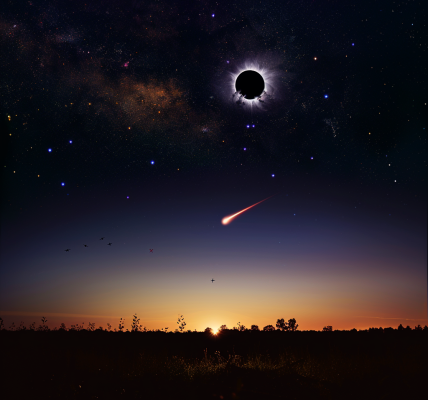We are on the brink of witnessing one of the most extraordinary space events that the world will ever experience. This rare cosmic event is scheduled to take place within this decade.
Over the past decade, we have been fortunate to witness some breathtaking cosmic phenomena. From a total solar eclipse to the sun reaching its peak activity, painting the skies with mesmerizing auroras, we have been treated to spectacular displays of nature’s wonders. However, what lies ahead promises to surpass all of these as it stands as one of the rarest space events in history.
A visit from asteroid 99942 Apophis is looming on the horizon in the upcoming years. But what makes this event so exceptional?
When Apophis was initially discovered in 2004, assessments categorized it at level two on the Torino impact hazard scale. This scale measures the potential risk of an asteroid impact on Earth. While level two indicates a low risk of causing destruction, recent observations in December have elevated Apophis to level four, with a 1.6% probability of a potential impact in 2029.
So, what does a level four classification entail in terms of the threat it poses? According to NASA, it signifies a close encounter that warrants attention from astronomers. With a 1% or higher chance of a collision capable of regional devastation, the situation demands vigilance. However, it is likely that further observations will lead to a reassignment to Level 0. Authorities stress the importance of public awareness and preparedness if the encounter is less than a decade away.
Apophis is causing some concern among NASA experts as no object has ever reached level four on the impact hazard scale. While the asteroid is not projected to collide with Earth in 2029, as well as in 2036 and 2068, there will be close encounters during these periods. Davide Farnocchia from NASA’s Center for Near-Earth Object Studies reassures that the possibility of an impact in 2068 is no longer viable, and calculations show no risk of impact for at least the next century.
Although a direct collision is not anticipated in 2029, Apophis will approach Earth closely. Coming within 32,000 kilometers of the Earth’s surface, the asteroid will pass closer to our planet than some satellites. The event is expected to be visible from the Eastern Hemisphere without the aid of telescopes or binoculars.
The European Space Agency (ESA) has labeled this flyby as ‘one of the rarest space events of our lives.’ In an X post, ESA describes the 2029 flyby as an incredibly uncommon occurrence. Scientists estimate that an asteroid as large as Apophis only comes this close to Earth once every 5,000 to 10,000 years by comparing impact craters across the Solar System with the sizes and orbits of known asteroids.
This upcoming event is set to captivate the world with its rarity and significance in the realm of space exploration. Stay tuned for more updates on this extraordinary celestial phenomenon.





